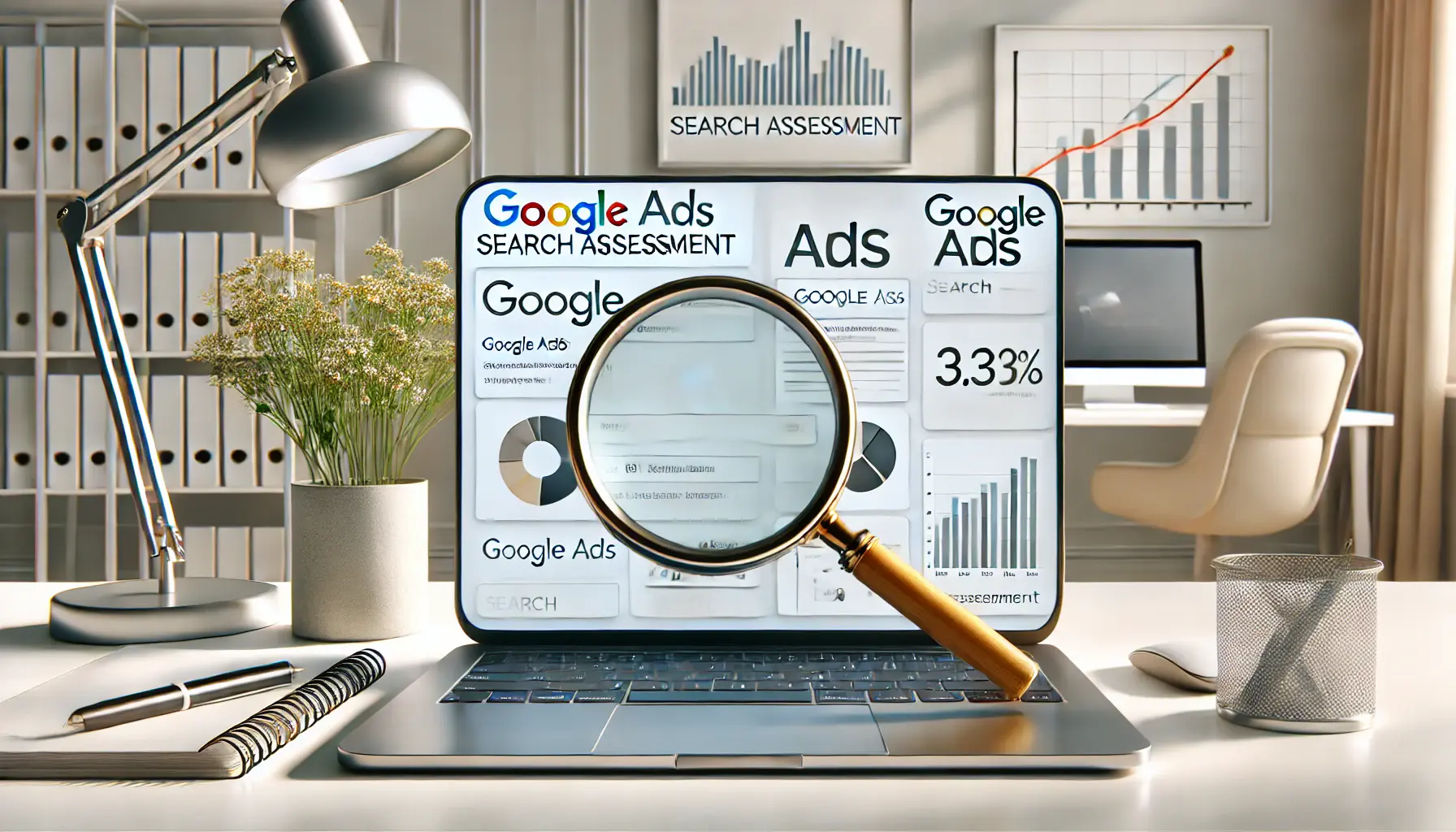In the fast-moving world of digital marketing, being ahead of the curve is key.
Among the most powerful tools marketers can use today is Search Interest TargetingA feature in Google Ads that targets users based on search habits and interests. in Google Ads.
This innovative feature enables advertisers to reach their audiences based on their search behaviors, ensuring that their campaigns resonate with the right users at the right time.
Whether you are new to Google Ads or an experienced marketer, learning all the nuances of search interest targeting will transform your advertising strategy in 2024 and beyond.
It’s not just about finding keywords; it’s about understanding the intent behind the search and using that to connect with prospective customers.
Master this approach to drive up ad relevance, lift conversion rates, and optimize your ad budget for better returns.
In this article, we explore all you need to know, starting with a comprehensive understanding of what Search Interest Targeting is and why it’s a game changer for marketers.
- Understanding Search Interest Targeting in Google Ads
- Implementing Search Interest Targeting Strategies
- Optimizing Campaign Performance with Search Interest Targeting
- Advanced Techniques in Search Interest Targeting
- Future of Search Interest Targeting: Upcoming Trends in Search Interest Targeting
- Mastering Search Interest Targeting in Google Ads
- Frequently Asked Questions about Search Interest Targeting
Understanding Search Interest Targeting in Google Ads
Search Interest Targeting is a feature within Google Ads that allows advertisers to target users based on their search habits and interests.
Unlike traditional keyword targeting, this method focuses on user intent, helping you craft campaigns that align closely with what potential customers are looking for.
This strategy leverages Google’s vast data on user behavior to create highly relevant and impactful ads.

A modern visualization of Search Interest Targeting, emphasizing global connectivity and data-driven insights.
Defining Search Interest Targeting
At its core, Search Interest Targeting refines your audience by tapping into their search activities.
It goes beyond simple demographics and considers the context of what users are actively searching for.
This allows you to serve ads that are not only relevant but also timely, improving the chances of engagement and conversion.

Visual representation of the advantages of Search Interest Targeting, emphasizing precision, improved ROI, and data-driven insights.
Benefits of Search Interest Targeting
Why target Search Interest?
Here are the key benefits:
- More Relevance: Your ads are tailored to align with your audience’s desires, increasing the likelihood of clicks.
- Cost Efficiency: Minimize wasted ad spend by targeting users most likely to convert.
- Better ROI: The combination of relevance and cost-effectiveness leads to improved return on investment.
- Deeper Insights: Gain a better understanding of your audience’s preferences and behaviors, helping refine your overall marketing strategy.

A visual comparison of search interest targeting versus other methods, highlighting intent, demographics, and keyword analysis.
How Search Interest Targeting Differs from Other Targeting Methods
What makes Search Interest Targeting unique is its intense focus on intent rather than just keywords or demographics.
While demographic targeting considers factors like age, gender, and location, and keyword targeting centers on specific phrases, search interest targeting fills the gap by analyzing exactly what users care about.
This makes it a flexible tool for reaching niche audiences and scaling your market.
By leveraging Search Interest Targeting, your campaigns stay one step ahead of the competition, meeting potential customers where they are in their decision-making process.
Next, we will dive into strategies for effectively employing this tool to maximize your campaign performance.
Search Interest Targeting goes beyond simple keywords to focus on user intent, allowing advertisers to create highly relevant campaigns.

A dynamic representation of implementing effective search interest targeting strategies, focusing on planning, precision, and execution.
Implementing Search Interest Targeting Strategies
Implementing effective Search Interest Targeting strategies in Google Ads is essential for reaching your desired audience and maximizing your campaign’s success.
By focusing on user intent and search behaviors, you can create highly relevant ads that resonate with potential customers.
To begin, it’s crucial to conduct thorough keyword research to understand the search behaviors of your target audience.
This involves identifying the terms and phrases they use and the intent behind these searches.
With a proper understanding of your audience’s search interests, you can start creating targeted ad campaigns.
This includes crafting ad copy and selecting ad formats that align with those interests.
For example, if your research indicates a high interest in sustainable living, your ads should highlight eco-friendly aspects of your products or services.

A visual representation of effective keyword research, highlighting data analysis and trend identification for digital marketing strategies.
Conducting Effective Keyword Research
At its core, Search Interest Targeting relies on solid keyword research.
Utilize tools such as Google Keyword Planner to find relevant search terms.
Analyze search query reports to gain insights into actual user searches.
Keep an eye on emerging trends to stay updated on evolving search interests.
By employing these keyword research techniques, you can ensure your targeting is accurate and current, leading to more impactful ad campaigns.

A depiction of crafting targeted ad campaigns, focusing on precision, digital platforms, and data-driven strategies.
Creating Targeted Ad Campaigns
Once you’ve identified the relevant keywords, it’s time to create targeted ad campaigns.
Craft compelling ad copy that directly addresses user intent.
Use dynamic keyword insertion to make your ads more relevant to individual search queries.
Consider utilizing responsive search ads, which allow you to provide multiple headlines and descriptions that Google can mix and match for optimal performance.
Additionally, ensure that your landing pages align with your ad copy to provide a seamless user experience.

A representation of dynamic search ads, emphasizing automation, customization, and relevance in digital marketing.
Utilizing Dynamic Search Ads for Enhanced Relevance
Dynamic Search Ads (DSAs) take your Search Interest Targeting to the next level.
With DSAs, ad headlines and landing pages are dynamically generated to match user search queries with the content on your website.
This approach helps capture additional traffic while saving time on manual ad creation.
However, it’s crucial to regularly review and optimize your DSA campaigns to ensure they align with your marketing goals.
By applying these strategies, you can make the best use of Search Interest Targeting in Google Ads, reaching your target audience, improving ad relevance, and achieving better campaign performance.
Conduct thorough keyword research and craft ad campaigns that align with user intent for optimal performance.

A visualization of optimizing campaign performance using search interest targeting, highlighting precision, metrics, and data-driven strategies.
Optimizing Campaign Performance with Search Interest Targeting
Enhancing your Google Ads campaigns through effective Search Interest Targeting is crucial for achieving optimal performance.
By aligning your strategies with user intent and search behaviors, you can significantly improve ad relevance and conversion rates.

A visual representation of leveraging smart bidding strategies, emphasizing automation, optimization, and data-driven decisions in digital marketing.
Leveraging Smart Bidding Strategies
Implementing smart biddingAutomated bidding strategies in Google Ads that use machine learning to optimize for conversions. strategies can automate and optimize your bids based on real-time data, enhancing campaign efficiency.
Consider utilizing:
- Target CPA (Cost Per Acquisition): This sets the bids to help you increase conversions while reaching your average cost-per-acquisition goal.
- Target ROAS (Return On Ad Spend): Sets the bids with the purpose of giving the maximum conversion value while achieving your target return on ad spend.
- Enhanced CPC (Cost Per Click): Automatically adjusts your manual bids to help you generate more conversions.
These strategies utilize machine learning to execute real-time bid optimization based on the likelihood of conversion informed by search behavior.

A visual representation of matching ads to the customer journey, emphasizing the flow from awareness to decision stages in digital marketing.
Matching Ads to the Customer Journey
Mapping the customer journey helps you create ads that resonate throughout different stages of the buying process.
To do this:
- Awareness Stage: Use broad keywords and informative ad copy to build brand awareness.
- Consideration Stage: Implement more specific keywords and highlight unique selling points to differentiate your offerings.
- Decision Stage: Utilize precise keywords and compelling calls-to-action to encourage conversions.
By tailoring your ads to the customer’s stage in their journey, you enhance relevance and engagement.

A visual representation of monitoring and adjusting campaigns for continuous improvement, emphasizing real-time metrics and data-driven decisions.
Monitoring and Adjusting Campaigns for Continuous Improvement
Regular monitoring and adjustments are vital for sustained campaign success.
Focus on:
- Performance Metrics: Analyze key indicators such as click-through rates, conversion rates, and cost per conversion to assess effectiveness.
- A/B Testing: Conduct tests on different ad copies, headlines, and visuals to determine what works best with your audience.
- Budget Allocation: Shift more budget toward high-performing ads and pause underperforming ones to yield higher ROI.
Continuous optimization ensures your campaigns remain effective and aligned with your marketing objectives.
By applying these practices, you can optimize your Google Ads campaigns for effective Search Interest Targeting, boosting performance and achieving higher conversion rates.
Focus on leveraging smart bidding, matching ads to the customer journey, and continuous monitoring for improvement.

A visual representation of advanced search interest targeting techniques, focusing on sophisticated data analysis and precision in targeting.
Advanced Techniques in Search Interest Targeting
To elevate your Google Ads campaigns, incorporating advanced Search Interest Targeting techniques is essential.
These strategies enable you to reach more specific and intent-driven audiences, enhancing ad relevance and performance.

A visual representation of utilizing long-tail keywords for targeted digital marketing, emphasizing precision and relevance.
Utilizing Long-Tail Keywords
Long-tail keywords are highly specific search phrases that cater to niche audiences.
Although they have lower search volumes, they often indicate stronger purchase intent.
By focusing on long-tail keywordsSpecific and detailed search phrases with lower search volume but higher intent., you can:
- Increase Relevance: Align your ads closely with user intent, leading to higher engagement.
- Reduce Competition: Benefit from lower bidding costs due to less competition.
- Enhance Conversion Rates: Attract users further along in the buying process, improving the likelihood of conversions.
Incorporating long-tail keywords into your strategy allows for more precise targeting and efficient use of your advertising budget.

A visual representation of implementing custom intent audiences, emphasizing targeted segmentation and user behavior flow.
Implementing Custom Intent Audiences
Custom Intent Audiences can help you reach users who are more likely to engage with your ads based on their recent search behaviors.
You can create a custom intent audience to:
- Reach High-Intent Users: Focus on individuals actively looking for products or services similar to yours.
- Improve Ad Relevance: Ensure your messaging aligns with users’ current interests and needs.
- Boost Conversion Potential: Engage users who are more likely to convert due to their demonstrated intent.
Leveraging custom intent audiences allows for a more personalized and effective advertising approach.

A visual representation of employing demographic and detailed demographic targeting, emphasizing segmentation by user characteristics.
Employing Demographic and Detailed Demographic Targeting
Google Ads offers demographic targeting based on factors such as age, gender, and household income.
Detailed Demographic Targeting goes further, allowing you to reach audiences based on:
- Education Level: Target users with specific educational backgrounds.
- Homeownership Status: Differentiate between homeowners and renters.
- Marital Status: Reach users based on their relationship status.
By utilizing these advanced demographic options, you can tailor your ads to specific life stages and characteristics, increasing relevance and engagement.

A visual representation of leveraging geo-targeting and local extensions, focusing on regional targeting and location-based marketing strategies.
Leveraging Geo-Targeting and Local Extensions
Advanced geo-targeting enables targeting users by their physical location or frequently visited places.
This strategy can:
- Enhance Local Relevance: Serve ads to users in specific areas, making your offerings more pertinent.
- Drive Foot Traffic: Target nearby users to encourage visits to physical locations.
- Optimize Ad Spend: Allocate budgets to regions with higher conversion potential.
Incorporating geo-targeting and local extensions ensures your ads reach the right audience at the right place and time.
By applying these advanced methods of Search Interest Targeting, you can optimize your Google Ads campaigns for better ad relevance, improved engagement, and higher conversion rates.
Incorporate advanced strategies like long-tail keywords, custom intent audiences, and detailed demographic targeting for precise campaigns.

A visual representation of the future of search interest targeting, emphasizing emerging trends like AI, machine learning, and dynamic data flow.
Future of Search Interest Targeting: Upcoming Trends in Search Interest Targeting
In the future, several emerging trends are likely to shape Search Interest Targeting with Google Ads.
Each of these developments forms the basis of new opportunities that you can leverage by staying updated and swiftly adapting strategies to maintain a competitive edge.

A visual representation of incorporating AI and machine learning, highlighting advanced algorithms and intelligent processes in digital marketing.
Incorporating Artificial Intelligence and Machine Learning
The addition of artificial intelligence and machine learning is transforming Search Interest Targeting using Google Ads.
These technologies offer:
- Smarter Automation: Streamlining campaign management by automating tasks such as bid adjustments and ad placements.
- Better Targeting Precision: Analyzing large datasets on user behaviors and preferences to enable more effective ad targeting.
- Real-Time Optimization: Continuously adjusting campaigns based on real-time performance data.
As AI technology evolves, the integration of AI-driven tools into advertising strategies will yield even more streamlined and effective processes.

A visual representation of the rise of visual and interactive search experiences, highlighting augmented reality and interactive media in search processes.
Rise of Visual and Interactive Search Experiences
The search landscape is becoming more visual and interactive, influencing how we think about Search Interest Targeting.
Key trends include:
- Visual Integration: Incorporating images and interactive elements into search results to enhance user engagement.
- New Ad Formats: Designing creative and interactive ad formats that capture users’ attention.
- AR Features: Using augmented reality (AR) to provide immersive ad experiences where users can virtually interact with products.
Adapting to these trends can significantly enhance user engagement and improve campaign performance.

A visual representation of the growing emphasis on data privacy and user consent, highlighting security and user protection in digital marketing.
Increased Focus on Data Privacy and User Consent
With growing concerns over data privacy, regulations are becoming more stringent, impacting Search Interest Targeting practices.
Key considerations include:
- Compliance with Regulations: Adhering to laws such as the General Data Protection Regulation (GDPR) to ensure user data is handled responsibly.
- Transparency in Data Usage: Clearly communicating to users how their data is utilized in ad targeting.
- User Consent Management: Implementing robust systems to obtain and manage user consent for data collection and usage.
Prioritizing data privacy not only ensures compliance but also builds trust with your audience.

A visual representation of the rise of voice search, highlighting its impact on search results and digital marketing.
Emergence of Voice Search and Its Implications
The increasing adoption of voice-activated assistants is altering how users search for information, affecting Search Interest Targeting.
Considerations include:
- Optimization for Conversational Queries: Adapting keyword strategies to account for natural language used in voice searches.
- Focus on Long-Tail Keywords: Targeting more specific phrases aligned with voice search patterns.
- Enhanced Local Search Targeting: Leveraging voice search trends to capture user intent at a local level and drive foot traffic.
Refocusing your strategy to cater to emerging voice search behavior ensures more relevant and impactful ads.
By staying aligned with these futuristic trends, you can effectively adapt to changes in Search Interest Targeting, whether driven by evolving user behavior or technological advancements.
Stay ahead by adopting AI, preparing for visual and voice search, and prioritizing data privacy in your strategies.

A visual representation of mastering search interest targeting, emphasizing precision and optimization in Google Ads.
Mastering Search Interest Targeting in Google Ads
Search Interest Targeting has emerged as a game-changing tool for digital marketers in Google Ads.
By understanding user intent and leveraging advanced strategies, this approach enables businesses to craft highly relevant and impactful campaigns.
As we conclude, let’s summarize the key insights from this article to reinforce the importance of integrating these strategies into your marketing efforts.

A visual representation of the foundation of search interest targeting, emphasizing the underlying principles and structure in digital marketing.
The Foundation of Search Interest Targeting
At its core, Search Interest Targeting focuses on identifying the search behaviors and intent of your audience.
This foundation ensures that every aspect of your campaign—keyword research, ad creation, and targeting—resonates with your potential customers.
By aligning your advertising strategy with user intent, you can enhance ad relevance, increase engagement, and drive higher conversion rates.

A visual representation of key strategies for effective implementation, focusing on precision, planning, and targeted strategies in digital marketing.
Key Strategies for Effective Implementation
To unlock the full power of Search Interest Targeting, consider implementing the following techniques:
- Conduct thorough keyword research to understand audience preferences and behaviors.
- Leverage smart bidding techniques to automate and optimize campaigns in real time.
- Craft ad copy tailored to different stages of the customer journey.
- Utilize advanced tools like dynamic search ads and custom intent audiences for precision targeting.

A visual representation of adapting to emerging trends, highlighting flexibility, innovation, and the dynamic nature of digital marketing.
Adapting to Emerging Trends
The future of Search Interest Targeting lies in adapting to technological advancements and evolving user behaviors.
By incorporating AI, embracing visual and interactive search formats, prioritizing data privacy, and preparing for the rise of voice search, you can ensure your campaigns remain relevant and effective in a dynamic digital landscape.

A visual representation of why search interest targeting matters, emphasizing precision, relevance, and data-driven decision-making.
Why Search Interest Targeting Matters
In today’s competitive advertising environment, precision and relevance are paramount.
Search Interest Targeting not only helps reduce wasted ad spend but also empowers businesses to connect with their audience in meaningful ways.
By focusing on intent and leveraging advanced tools, you can achieve better ROI, build stronger customer relationships, and stay ahead of the competition.
Mastering Search Interest Targeting in Google Ads puts your brand on the right track to success in this ever-evolving digital marketing world.
Take this knowledge and start implementing it today to unlock your campaigns’ full potential and ensure you achieve your marketing objectives.
Search Interest Targeting empowers businesses to align with user intent, optimize relevance, and drive better results.

A visual representation of frequently asked questions about search interest targeting, highlighting inquiry, learning, and discovery in digital marketing.
Your campaigns can be managed by an agency specialized in Google Ads, check out our service page.
Frequently Asked Questions about Search Interest Targeting
As Search Interest Targeting continues to evolve in Google Ads, it’s natural to have questions about how to best leverage this tool in 2024.
Here are some frequently asked questions to help you navigate this dynamic landscape.
Search Interest Targeting enables the delivery of ads to users based on their search behaviors and interests, ensuring better ad relevance and engagement.
While keyword targeting focuses on specific search terms, Search Interest Targeting considers user intent and broader search behaviors to deliver more personalized ads.
Yes, combining Search Interest Targeting with demographic or location targeting can enhance campaign effectiveness by reaching a more specific audience.
To implement Search Interest Targeting, conduct thorough keyword research, create targeted ad campaigns, and utilize tools like dynamic search adsGoogle Ads feature that automatically generates headlines and landing pages based on user queries. and custom intent audiences.
Benefits include increased ad relevance, improved conversion rates, cost-effectiveness, and deeper insights into audience preferences and behaviors.
Optimize campaigns by leveraging smart bidding strategies, matching ads to the customer journey, and continuously monitoring and adjusting campaigns for improvement.
Advanced techniques include utilizing long-tail keywords, implementing custom intent audiences, employing detailed demographic targeting, and leveraging geo-targeting and local extensions.
AI and machine learning enhance Search Interest Targeting by enabling smarter automation, better targeting precision, and real-time optimization of ad campaigns.
Adhering to data privacy regulations and obtaining user consent are crucial to maintaining trust and ensuring compliance in Search Interest Targeting practices.













